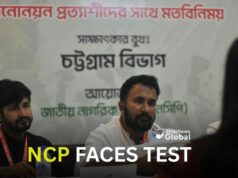“President Trump is a master of claiming success, but that is a narrative that we will have to meet,” said former diplomat Vivek Katju, during a panel discussion on Operation Sindoor organised by the Indo-American Friendship Association(IAFA) in New Delhi.
He should have added the name of Pakistan’s army chief Gen Asim Munir too. Witness how he claimed victory post Operation Sindoor, and had himself promoted field marshal.
In this clash of narratives, some say the Pakistanis got the better of India and this may also flow from an old view that Islamabad has only one enemy, while India is challenged on many fronts, from the immediate and the physical to economic and so on.
But back to Trump, jumping in and claiming credit for the ceasefire. Much of this may have to do with Trump’s own personality. Since taking over as president, he has boasted about sorting out the Ukraine conflict and the Gaza war in short order. Last we heard, those wars were still continuing.
A lot of diplomacy is about nuance and while South Block lost no time in refuting Trump’s claim, academics and diplomats pointed to something else: Trump had condemned the Pahalgam terrorist attack of April 22nd (that triggered Op. Sindoor), and said the US stood with India.
But Prof. Chintamani Mahapatra, who researched and taught American politics at Jawaharlal Nehru University, says what Trump did not say is equally important.
“Trump has often shown his friendship with Prime Minister Modi. But he has not accused Pakistan of having a hand in the Pahalgam attack.”
But there’s more. Trump did not criticize India for attacking the terror camps in Pakistan nor did he support the action. He did not call for a ceasefire even after India struck nine terror camps.
That may have suited some in India, but here’s the catch: he did not criticize Pakistan for attacking Indian civilian targets. He did nothing to dissuade Pakistan from attacking Indian military targets after targeting civilian ones. Also, no criticism of Islamabad.
To top it all, Trump used the words mediated, helped and brokered in connection with the ceasefire. Later he claimed he had used trade as leverage to push for a ceasefire.
Prof Mahapatra made another point: “Trump does not bother at all about cross-border terrorism, which India keeps complaining about. He appears to have been convinced that Pakistan is also a victim of terrorism, and has fought terrorists on behalf of the US in Afghanistan for decades. Pakistan recently handed over a dated terrorist to the United States.”
Pakistan drew a lot of praise from Trump during his address to the US Congress. This may have stemmed from Islamabad’s fulsome praise of the US president after he claimed credit for bringing about the ceasefire.
India not supporting Trump’s assertion that he played a role made it easier for Pakistan to subtly tell the world that Trump was upset with Delhi. Islamabad even reverted to the old tune about a US role in resolving Kashmir, portraying India as the villain of the piece by opposing third party mediation.
Taken together, the chronology of statements from various US leaders hardly helped South Block understand the thinking in Washington DC.
Vice-President JD Vance said “We’re not going to get involved in a war that’s fundamentally none of our business and has nothing to do with America’s ability to control it.”
Vivek Katju, given his long years as a diplomat, believes that “In the US State Department statement, they used the word ‘brokered ceasefire’. My own experience in these matters is that a web of conversations keeps taking place in situations like this. The Americans talk, the Europeans talk to us, to the Pakistanis, we talk to people, the Pakistanis talk to people. However, the ultimate decisions have to be taken bilaterally.”
That last tells you the official Indian position on bilateral disputes, that these need to be settled bilaterally, even ceasefires or cessation of hostilities. As for whether Trump is pro-India or pro-Pakistan, it may be neither. At the end of the day, for Trump it’s all about business, his business and that’s probably what one needs to monitor.




